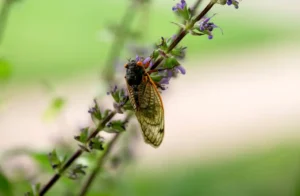In 84 of the fossils found in Canada’s Yoho National Park, the remains of the brain and nerves are still preserved after 506 million years.

Discovering a three-eyed extinct species is notable enough, but discovering its well-preserved brain and nervous system when it has been dead for more than 500 million years has researchers at University of Toronto excitedly rethinking the entire evolution of insects and spiders.
The fossils belonged to a marine predator from the Burgess Shale in Canada’s Yoho National Park, called Stanleycaris, distantly related to modern arthropods. In 84 of the fossils, the remains of the brain and nerves are still preserved after 506 million years. The findings were published in a study in the journal Current Biology last week.
“The presence of a huge third eye in Stanleycaris was unexpected. It emphasizes that these animals were even more bizarre-looking than we thought, but also shows us that the earliest arthropods had already evolved a variety of complex visual systems like many of their modern kin.”
Dr. Jean-Bernard Caron
Discoveries from the new fossils
The new fossils show that the brain of Stanleycaris (Crab of Stanley Glacier), which lived during the Middle Cambrian Period (about 497-509 million years ago) was composed of two segments, the protocerebrum and deutocerebrum, connected with the eyes and frontal claws, respectively. Today’s insects have three brain segments. The researchers note that the additional segment has radical scientific implications because duplicate copies of many arthropod organs can be found in their segmented bodies.
Another notable discovery on the Stanleycaris is its centrally located third eye, in addition to large compound eyes, which paleontologist Dr. Jean-Bernard Caron called “unexpected.”
“It emphasizes that these animals were even more bizarre-looking than we thought, but also shows us that the earliest arthropods had already evolved a variety of complex visual systems like many of their modern kin,” Caron said.
The array of features found on the Stanleycaris, from its massive three eyes to its claws, must have made it frightening to small bottom dwellers unfortunate enough to cross its path, the researchers said.
